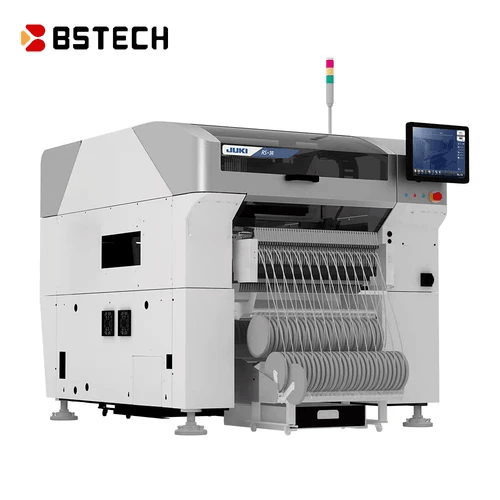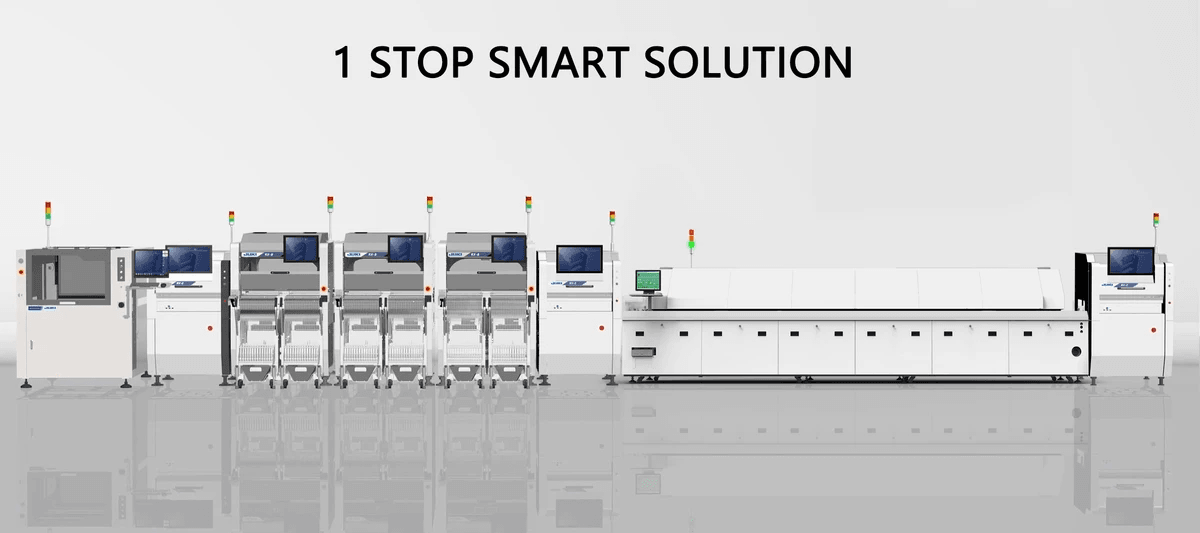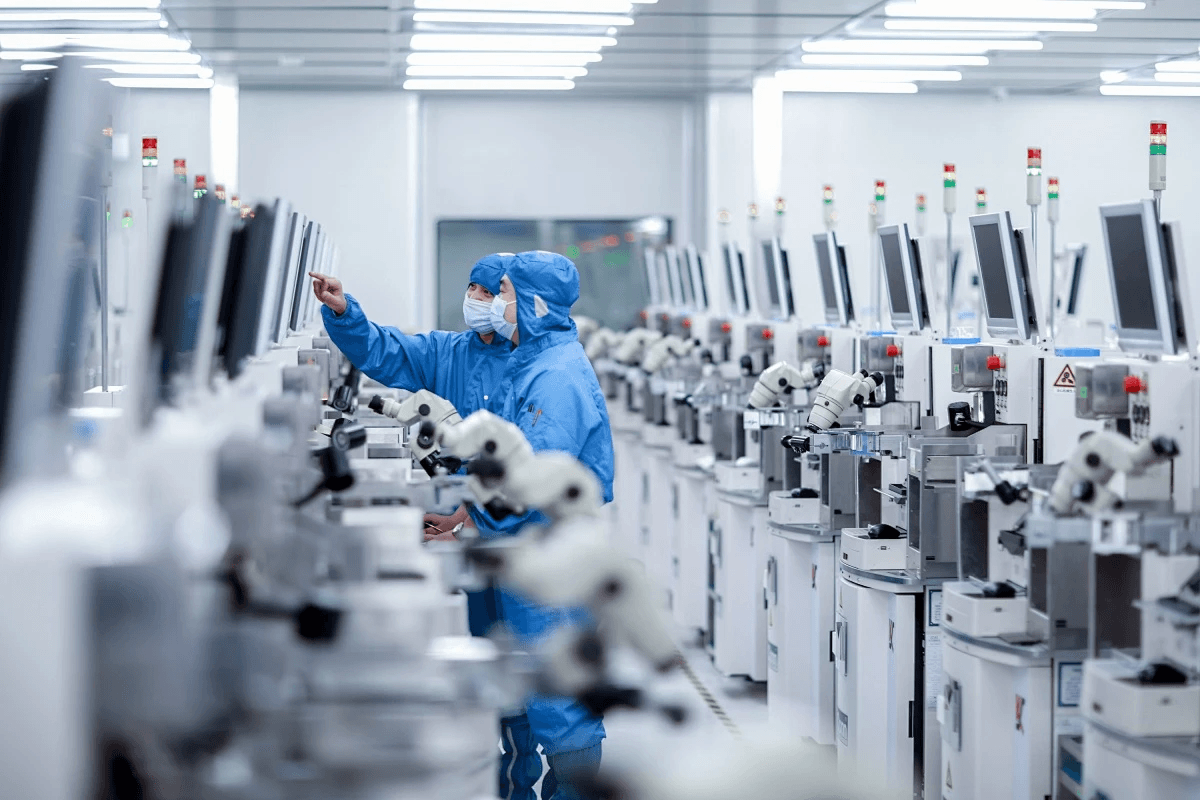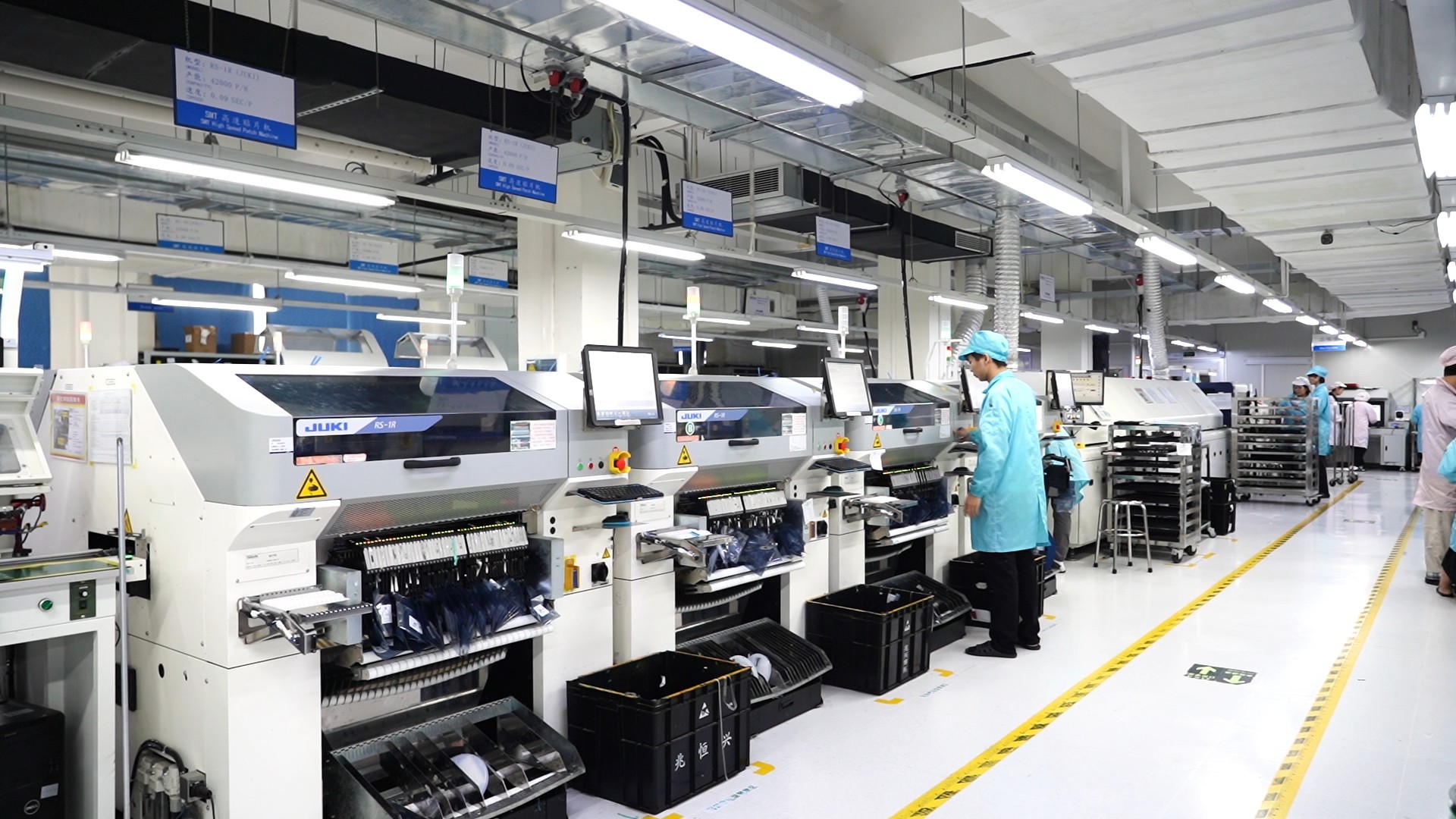Introduction
In the fast-paced world of electronics manufacturing, understanding the intricacies of a pick and place machine is essential for optimizing production efficiency. These machines play a pivotal role in surface mount technology (SMT) lines, enabling precise placement of components onto printed circuit boards (PCBs). However, navigating the landscape of pick and place machine cost can be daunting for manufacturers looking to invest in this crucial equipment.
Understanding Pick and Place Machines
A pick and place machine automates the process of assembling electronic components onto PCBs with impressive accuracy and speed. These machines utilize advanced robotics and vision systems to identify, grasp, and position components precisely where they need to go. By integrating a well-designed SMT machine into production lines, manufacturers can significantly enhance their output while minimizing human error.
Why Pick and Place Machine Cost Matters
The cost associated with a pick & place machine is not just a number on an invoice; it represents an investment that can impact your bottom line for years to come. Understanding the various factors that contribute to pick and place machine costs—such as specifications, features, brand reputation, and market trends—is vital for making informed purchasing decisions. Ultimately, striking the right balance between quality and affordability will determine how effectively your business can compete in today’s market.
The Importance of Choosing the Right SMT Machine
Selecting the appropriate SMT machine goes beyond merely considering its price tag; it's about aligning your choice with your production needs and future growth plans. An optimal machine pick and place should offer scalability, reliability, and support for diverse component types while fitting seamlessly into your existing SMT line setup. By investing time in evaluating different options based on their long-term value rather than just initial costs, you set yourself up for sustained success in manufacturing.
Factors Influencing Pick and Place Machine Cost

Machine Specifications and Features
The specifications and features of a pick & place machine are primary determinants of its cost. Machines equipped with advanced technology, such as high-speed placement capabilities, precision optics, and multi-functionality often come at a premium price. Additionally, features like automated feeders or integrated inspection systems can further increase the pick and place machine cost but offer substantial benefits in terms of efficiency and accuracy.
Investing in a high-quality SMT machine with robust specifications may seem daunting financially; however, it’s essential to consider the long-term savings on labor costs and production efficiency. A well-specified machine can streamline your SMT line operations, reducing downtime and enhancing throughput. Therefore, while initial costs may be higher for advanced models, they often pay off through increased productivity over time.
Brand Reputation and Warranty Options
Brand reputation plays a significant role in determining pick & place machine costs. Established brands with a history of reliability often charge more for their machines due to their proven track record in quality manufacturing and customer support. Moreover, these brands typically offer better warranty options that can save you money on repairs or replacements down the line.
Choosing equipment from reputable manufacturers not only ensures that you’re investing in quality but also provides peace of mind through comprehensive service agreements. The warranty coverage is crucial when considering long-term operational costs associated with any smt machines you plan to purchase. Remember that a higher upfront cost might lead to lower overall expenses if it includes extensive support services.
Market Trends Affecting Pricing
Market trends have an undeniable impact on pick and place machine cost fluctuations over time. For instance, advancements in technology can lead to increased demand for newer models equipped with cutting-edge features that push older models' prices down as they become less desirable on the market. Conversely, supply chain disruptions or raw material shortages could drive up production costs for new machinery.
Additionally, economic factors such as inflation rates or changes in manufacturing demand across various industries will influence pricing strategies adopted by manufacturers of SMT machines. Keeping an eye on these trends will help you make informed decisions about when to buy or whether waiting might yield better pricing opportunities for your next machine pick and place investment.
Comparing New and Used Pick & Place Machines

When it comes to investing in a pick and place machine, one of the biggest decisions you'll face is whether to buy new or used. Each option has its own set of advantages and disadvantages that can significantly affect your overall pick and place machine cost. Understanding these differences can help you make a more informed choice that aligns with your business needs.
Pros and Cons of Buying New
Buying a new pick & place machine often means you're getting the latest technology, which can translate into better efficiency and higher production rates on your SMT line. New machines typically come with comprehensive warranties and support from manufacturers, providing peace of mind as you integrate them into your operations. However, this convenience does come at a price, as new machines can be significantly more expensive than their used counterparts, potentially stretching your budget thin if not planned for properly.
On the flip side, while new machines offer cutting-edge features—such as advanced automation capabilities—they may not always be necessary for every application. If your production needs are straightforward, investing heavily in the latest model might not yield a return proportional to its cost. Therefore, weighing the pros against the cons is essential for determining if a new machine pick and place suits your specific situation.
Evaluating Used Machinery Options
Opting for a used pick and place machine can be an attractive way to lower costs while still acquiring quality equipment for your SMT machines. The key is to thoroughly evaluate the condition of any used machinery before making a decision; inspecting maintenance records and operational history is crucial. Additionally, consider whether the seller offers any warranty or service options that could mitigate risks associated with buying pre-owned equipment.
While used machinery may lack some modern features found in newer models, it often provides excellent value for companies just starting out or those with more modest production requirements. Many businesses find that older models still perform adequately for their needs without breaking the bank on pick & place machine costs. However, it's essential to ensure that any used equipment meets current industry standards to avoid future complications.
When to Choose Refurbished Equipment
Refurbished equipment presents an appealing middle ground between new and used options when considering pick and place machines for your SMT line. These machines have usually been restored by professionals who ensure they meet stringent quality standards before resale—offering some level of assurance compared to buying outright used machinery from unknown sources. Additionally, refurbished units often come at reduced prices compared to brand-new models while still incorporating many updated features.
Choosing refurbished equipment makes sense when you're looking for reliability without incurring exorbitant costs associated with brand-new systems; it’s particularly beneficial if you want something closer to current technology but need it at a fraction of the price tag attached to new models. Furthermore, many suppliers provide warranties on refurbished machinery which adds another layer of security regarding long-term investments in your SMT operations. Ultimately, understanding when refurbished options are suitable can help balance performance needs with budget constraints effectively.
The Role of Automation in Pick and Place Costs

In the realm of manufacturing, automation has become a game-changer for reducing pick and place machine costs. By integrating advanced technologies into the production line, companies can significantly lower labor expenses while increasing output quality. This shift not only improves the bottom line but also enhances the overall competitiveness of businesses in the SMT (Surface Mount Technology) sector.
How Automation Reduces Labor Costs
One of the most significant advantages of using a machine pick and place system is its ability to minimize labor costs. Automated pick & place machines can operate continuously without breaks, drastically cutting down on the need for manual laborers on the SMT line. Moreover, by reducing reliance on human operators, businesses can mitigate risks associated with human error, leading to fewer defects and rework expenses.
Additionally, automation allows companies to streamline their workforce by reallocating skilled labor to more complex tasks that require human oversight. This means that instead of hiring numerous workers for repetitive tasks, manufacturers can invest in fewer employees who manage multiple automated systems efficiently. Ultimately, this strategic shift results in substantial savings on wages and training costs over time.
Impact on Production Efficiency
The integration of automation within pick and place machines significantly boosts production efficiency across various industries. Automated systems operate at high speeds with precision, ensuring that components are placed accurately every time—something manual processes often struggle with due to fatigue or oversight. Consequently, this efficiency translates directly into higher throughput rates and faster turnaround times for products.
Moreover, real-time monitoring capabilities available in modern SMT machines allow manufacturers to identify bottlenecks or inefficiencies quickly. By analyzing performance data generated during production runs, companies can make informed adjustments that further enhance output quality and speed. In an industry where timing is crucial for market competitiveness, leveraging automation becomes essential for maintaining an edge over rivals.
Future Trends in SMT Machines
Looking ahead, the future trends in pick and place technology hint at even greater advancements aimed at reducing costs while improving efficiency. Innovations such as artificial intelligence (AI) integration are poised to revolutionize how machines operate within SMT lines by enabling predictive maintenance and adaptive learning processes that optimize performance continuously. As these technologies evolve, we can expect a dramatic reduction in overall pick and place machine cost through enhanced reliability.
Furthermore, as sustainability becomes increasingly important across industries, manufacturers are likely to adopt greener practices through automated solutions that minimize waste during production processes. This shift not only aligns with global environmental goals but also appeals to eco-conscious consumers who prioritize sustainability when making purchasing decisions. Therefore, investing in advanced automated pick & place machinery will not just be about cost savings; it will also represent a commitment to responsible manufacturing practices moving forward.
Financing Your Pick and Place Machine

When considering the investment in a pick and place machine, understanding your financing options is crucial. The right choice can significantly impact your overall pick and place machine cost, whether you opt for leasing or purchasing outright. Additionally, exploring available grants and subsidies can help ease the financial burden, making it easier to integrate SMT machines into your operations.
Exploring Leasing vs. Buying Options
Leasing a pick & place machine often presents an attractive alternative to buying one outright, especially for startups or smaller manufacturers. With leasing, you can enjoy lower initial costs while still accessing the latest technology in SMT machines without tying up capital in a purchase. However, owning a machine pick and place means you’ll ultimately have full control over the equipment and its long-term value—a key consideration when evaluating total ownership costs.
Buying a new or used SMT machine might seem daunting due to the upfront investment; however, it allows for greater customization according to specific production needs. For companies with established production lines looking to upgrade their equipment without ongoing lease payments, purchasing could be more beneficial in the long run. Ultimately, weighing these options involves considering not just immediate costs but also how each choice aligns with your business goals.
Grants and Subsidies for Manufacturers
Manufacturers should actively seek out grants and subsidies that may be available for acquiring advanced machinery like pick & place machines. Many government programs exist specifically to support businesses investing in automation technology that enhances productivity within their industries. These funds can significantly reduce the overall pick and place machine cost while enabling manufacturers to stay competitive in an ever-evolving market.
Additionally, industry-specific organizations sometimes offer financial incentives aimed at encouraging innovation through automation technologies such as SMT machines. By conducting thorough research into local and national programs, manufacturers may uncover valuable resources that make financing their next machine smt much more manageable than anticipated. Leveraging these opportunities not only aids in funding but also demonstrates commitment to modernizing operations.
Budgeting for Maintenance and Upgrades
While considering the initial purchase of a pick and place machine is essential, budgeting for maintenance should not be overlooked as part of your overall financial strategy. Regular upkeep ensures optimal performance of your SMT line while minimizing downtime—an essential factor affecting production efficiency and profitability over time. Setting aside funds specifically for maintenance will help mitigate unexpected costs associated with repairs or replacements down the line.
Moreover, as technology evolves rapidly within manufacturing sectors like electronics or automotive industries, planning for future upgrades is equally important when assessing total ownership costs of any machine pick and place system you decide on today. Allocating budgetary resources toward potential enhancements ensures that your investment remains relevant amidst changing market demands—and helps maintain competitive advantages against rivals using outdated equipment.
By being proactive about financing strategies—from choosing between leasing versus buying options to budgeting effectively—you position yourself well to manage both immediate expenses related to acquiring new SMT machines as well as long-term operational costs tied directly back into maintaining high-quality production standards across all facets of manufacturing processes.
Case Studies: Companies Saving with Bensun Machinery

Bensun Machinery has established itself as a leader in the field of pick and place machines, demonstrating how investing in quality equipment can lead to significant cost savings across various industries. By examining specific case studies, we can see firsthand how companies have optimized their SMT lines and enhanced production efficiency while keeping an eye on the overall pick and place machine cost. These success stories not only highlight the benefits of using Bensun's machines but also illustrate the importance of choosing the right machine for your unique manufacturing needs.
Consumer Electronics Success Stories
In the fast-paced world of consumer electronics, companies are constantly seeking ways to improve their production processes while managing costs effectively. One notable success story involves a leading smartphone manufacturer that integrated Bensun's advanced pick & place machine into their SMT line. By automating assembly with this high-speed machine, they reduced labor costs by 30% while increasing their output by 25%, all without significantly raising their pick and place machine cost.
Another company producing wearable technology saw similar results after upgrading to a new Bensun model. The enhanced precision and speed of their new SMT machines allowed them to maintain product quality while scaling up production during peak demand periods. This strategic investment not only improved their profit margins but also positioned them favorably against competitors who were struggling with outdated machinery.
Lastly, a startup specializing in smart home devices turned to refurbished Bensun machinery for its affordability without compromising on quality. They managed to keep initial expenses low while benefiting from high-performance features that allowed them to compete with larger players in the market. This case highlights how selecting the right machine for your needs can lead to substantial savings over time.
Automotive Industry Applications
The automotive sector is another area where Bensun's pick and place machines have made a significant impact on operational efficiency and cost management. A prominent auto parts manufacturer adopted a state-of-the-art SMT machine from Bensun that streamlined its assembly line processes, resulting in a remarkable reduction in cycle times by nearly 40%. This improvement directly translated into lower production costs per unit, showcasing how investing wisely in machinery can enhance profitability.
Another automotive supplier faced challenges related to fluctuating demand for components; however, after incorporating automation through Bensun’s pick & place technology, they achieved unprecedented flexibility within their operations. The ability to quickly adapt production schedules allowed them to meet customer demands without incurring excessive overtime or labor costs—keeping overall expenses down while maximizing output efficiency.
Moreover, an electric vehicle manufacturer utilized advanced features of Bensun’s machines specifically designed for intricate PCB assemblies required for battery management systems. With enhanced accuracy and speed provided by these SMT machines, they successfully reduced defects significantly—a critical factor when it comes to safety standards in automotive manufacturing—thus saving on potential recalls or rework costs.
Innovations in LED Lighting Production
The lighting industry has been transformed by advancements in LED technology, but this rapid evolution also demands efficient manufacturing solutions like those offered by Bensun Machinery. A company specializing in decorative LED fixtures implemented a new pick and place machine that optimized its assembly process through precise component placement at high speeds—leading to an impressive reduction of 20% in overall production time compared to previous methods.
Another enterprise focused on commercial lighting found that integrating automation into its SMT line enabled them not only to increase throughput but also reduce waste associated with manual handling errors—a common issue within traditional setups involving older machinery like conventional manual pick and place systems. By investing strategically into modern equipment from Bensun at reasonable prices relative to performance gains achieved along with reduced operating expenses over time proved invaluable for maintaining competitiveness within this rapidly evolving sector.
Lastly, an innovative startup developing smart lighting solutions leveraged refurbished equipment from Bensun as part of its growth strategy due largely because it matched budget constraints perfectly while offering reliability synonymous with new models at half the price tag! Their successful deployment demonstrates that savvy investments can yield powerful returns even when working within tight financial parameters—all thanks largely due diligence regarding understanding true value versus upfront costs associated with any given pick & place machine purchase decision-making process!
Conclusion

In the world of manufacturing, particularly in the realm of surface mount technology (SMT), understanding pick and place machine cost is crucial for making informed decisions. The right pick & place machine can significantly enhance productivity while keeping operational costs in check. By considering various factors, companies can strategically invest in equipment that meets their needs without breaking the bank.
Strategies for Reducing Overall Costs
To effectively manage pick and place machine costs, businesses should consider several strategies that can lead to significant savings. First, investing in a high-quality SMT machine may seem daunting initially, but it often results in lower maintenance expenses and fewer production disruptions over time. Additionally, exploring automation options can further reduce labor costs associated with manual assembly processes, allowing for a more efficient smt line.
Another effective strategy is to evaluate both new and refurbished machinery carefully before making a purchase decision. While new machines offer advanced features and warranties, used or refurbished options can provide substantial savings if they meet your production requirements. Finally, staying informed about market trends affecting pricing will help you make timely purchases that align with your budgetary goals.
The Long-Term Value of Quality Equipment
When it comes to investing in a machine pick and place, prioritizing quality often pays off down the line. High-quality SMT machines tend to have better reliability and longevity compared to their cheaper counterparts; this means fewer breakdowns and less downtime during critical production periods. Over time, the total cost of ownership becomes much more favorable when you factor in these long-term benefits.
Moreover, quality equipment typically comes with robust support from manufacturers or distributors who understand the intricacies of their machines. This support can translate into better training for operators as well as quicker resolutions to any issues that arise during operation—ultimately contributing to smoother production processes on your smt line. In an industry where precision is key, choosing a reliable pick & place machine ensures consistent output quality which is invaluable for maintaining customer satisfaction.
Finding the Right Pick and Place Solution
Navigating through the myriad of options available when searching for a suitable pick and place solution can be overwhelming—but it doesn’t have to be! Start by clearly defining your production needs: consider factors like volume requirements, component types, and future scalability when evaluating different models of SMT machines. This targeted approach will help you hone in on machinery that aligns perfectly with your operational goals while keeping an eye on overall costs.
Additionally, don’t hesitate to engage with vendors who specialize in smt machines; they often provide insights into features that could enhance efficiency or reduce waste within your manufacturing process. Remember also to factor in potential upgrades or expansions down the road—selecting a versatile machine now can save you from costly replacements later on as technology evolves within this dynamic industry.
